Even though we always look for snakes when we hike, surprising one on the trail today reminded us that we need to be even more vigilant as they now emerge from hibernation.
As our season at Imperial National Wildlife Refuge winds down and more reptiles appear, we explore the desert everyday in search of wildlife and their signs. Today when we hiked a remote wash rarely explored by other hikers on the Refuge, we found no boot tracks or other signs of human invasion.
Wildlife Signs
Lines in soft sand revealed paths taken by lizards dragging their tails. Fresh burro tracks explained the occasional squashed flower. And newly excavated burrows indicated coyote diggings.
When hiking, I generally inspect the ground before me, searching for tracks and scat (droppings), but lately I’ve attempted to train myself to look up to search for the silhouette of a bighorn sheep on a high rock outcropping or a great horned owl glaring at us from an ironwood tree. So when a dove exploded from a creosote bush as we passed by, I looked up to watch it fly away, never slowing my pace.
That’s when the buzzing started.
Opportunity to Escape
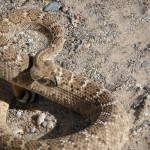 Both Chuck and I froze until we located the rattlesnake not more than five feet away. As the rattling continued, the snake coiled in defense. We remained motionless to give the rattler opportunity to escape. Still postured, still rattling, still watching us, it slithered under the creosote bush. Although it was prepared to defend itself, its main interest, as with most snakes, was removing itself from danger.
Both Chuck and I froze until we located the rattlesnake not more than five feet away. As the rattling continued, the snake coiled in defense. We remained motionless to give the rattler opportunity to escape. Still postured, still rattling, still watching us, it slithered under the creosote bush. Although it was prepared to defend itself, its main interest, as with most snakes, was removing itself from danger.
The encounter reminded us, once again, that we must be alert, especially this time of year, especially in this country. As we continued our hike, we focused our gaze on the ground, along rock walls, and under bushes. Using the snake hook, Chuck poked into vegetation we passed close to and lifted branches to inspect under them, giving notice of our presence to allow snakes to retreat.
Vigilance
Most people who are bitten by venomous snakes are either not paying attention or are trying to kill or harm the snake. By watching where we put our hands and feet, we ensured our safety and that of the snakes. This is rattlesnake country, and while the snakes don’t seek confrontation, they will defend themselves.
Rattlesnake Country:
Other Snake Encounters:
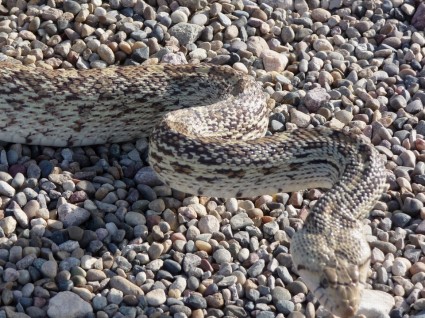
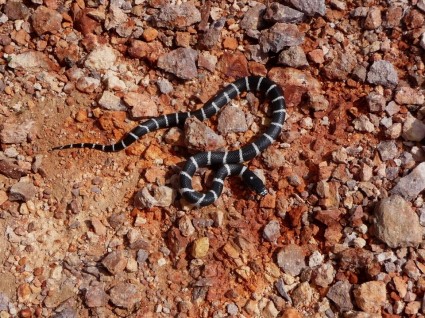
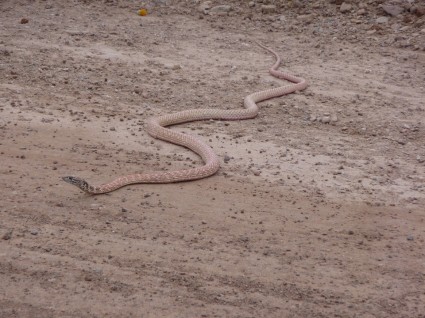
Wildlife Signs:
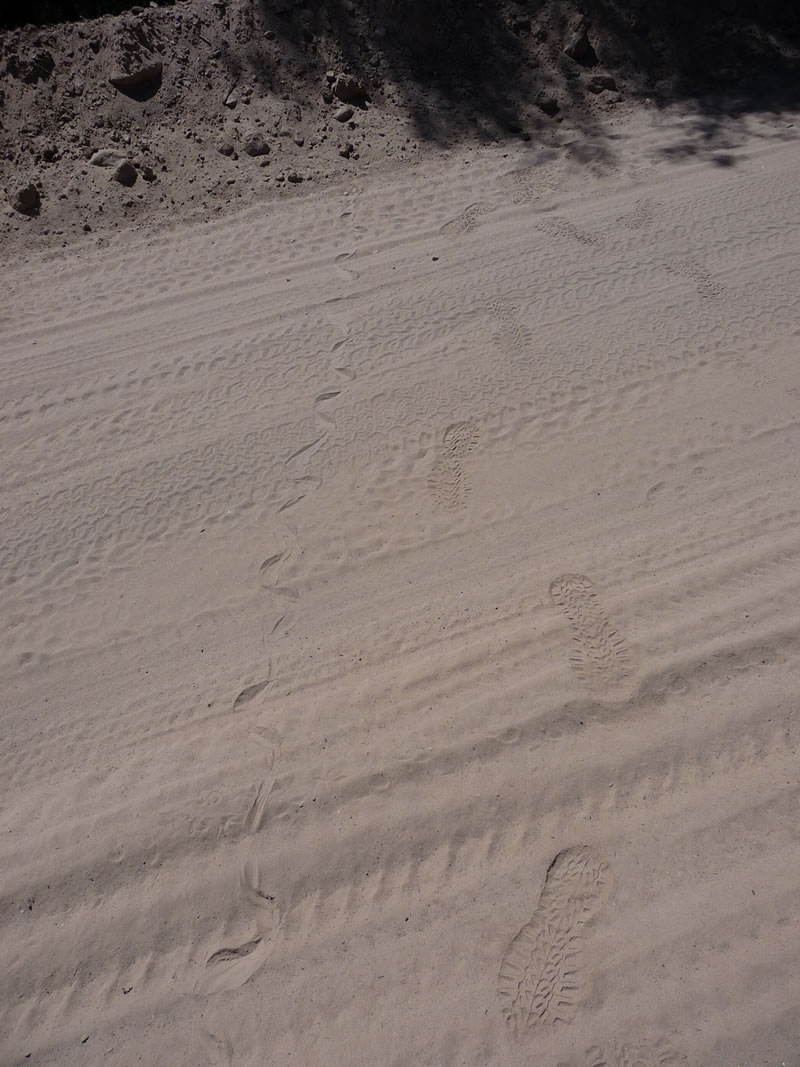
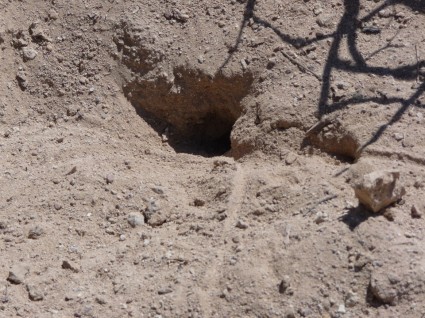

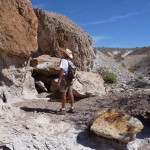
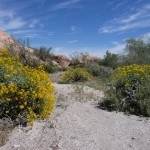
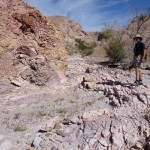
Good stuff! I especially like the coachwhip. For as many of them are seen good photos like that are hard to get.
Thanks for the comments! I consider it a real compliment from a herper who’s taken dozens of “calendar quality” pictures! We’re reluctantly heading out of AZ for the Teton/Yellowstone area for the summer. That ecosystem is home for a whopping 12 species (count ’em) of herps…..We’ll return to the Yuma area in Oct.